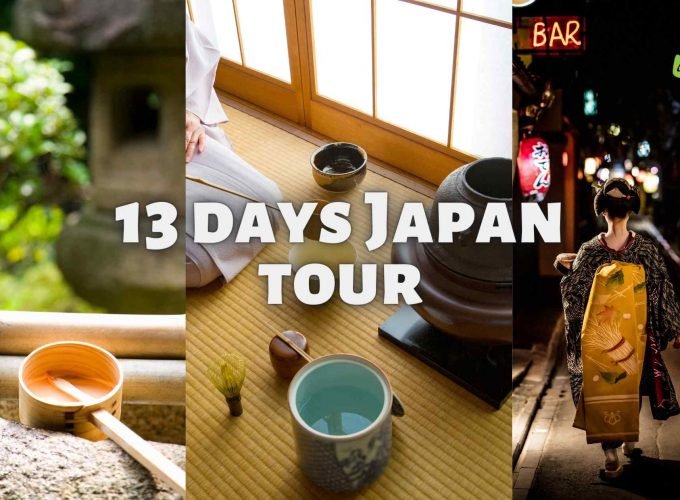About Geisha
Know about Geisha – Geisha are traditional Japanese female entertainers who are trained in a variety of disciplines such as classical music, dancing, games, and conversation in order to entertain visitors at tea ceremonies, banquets, and other special events. They are frequently referred to as “geiko” in Kyoto, where the geisha culture is most strongly rooted.
Geisha have been around since the 17th century in Japan. Geisha used to be guys, but by the 19th century, they were all women. There are just a few hundred geisha in Japan today, with the majority situated in Kyoto.
Geisha are traditional artists who are noted for their grace, composure, and elegance. They dress in traditional geisha attire, like as kimonos, obis, and white face paint, and their hair is styled in the classic geisha style.
The geisha’s role has changed with time, and they are no longer as prominent as they once were. However, they continue to be a vital element of Japanese culture, and there are still tea houses and banquets where guests can enjoy their companionship and entertainment.
If you want to see a traditional geisha performance, there are a few tea houses in Kyoto that provide it, but keep in mind that these experiences may be extremely pricey, and bookings are often required in advance. Nonetheless, a visit to Kyoto is a necessity for everyone interested in experiencing this distinct and intriguing facet of Japanese culture.
History of Geisha
Geisha first appeared as street entertainers in the towns of Kyoto and Osaka in the 17th century, which is when the history of geisha in Japan can be traced back to the beginning. Geisha were formerly male entertainers who would sing, dance, and play instruments for guests at banquets and other social gatherings. At the time, geisha were only found in Japan.
Beginning in the latter half of the 17th century, women started entering the geisha profession. By the 19th century, women made up 100% of the geisha population. Geisha, who became increasingly popular throughout time, eventually became an essential component of the social fabric of Japan, providing entertainment at tea houses, banquets, and other types of gatherings.
Geisha were held in extremely high regard because to their mastery in a variety of traditional arts, including but not limited to classical music, dance, games, and conversation. They were also noted for their beauty, grace, and elegance, and the position of geisha was regarded to be one of the occupations in Japan that held the highest rank for women.
As Japan went through tremendous social and cultural upheaval in the 20th century, the function of the geisha shifted in response to these shifts. As Western cultural influences became more pervasive in Japanese society, the number of geisha decreased, and the profession became less significant.
There are still a few hundred geisha in Japan today, the majority of whom are based in Kyoto. Despite these changes, the tradition of the geisha has remained and there are still geisha in Japan. Geisha continue to entertain visitors at tea houses and banquets in the traditional fashion. Despite the fact that the role of the geisha may have changed over the course of history, geisha continue to be a significant component of the cultural heritage of Japan.
Important facts to know about Geisha
The following is a list of significant information about geisha that will assist you in better comprehending this intriguing facet of Japanese culture:
- Geisha are female entertainers: Geisha are female entertainers who are traditionally trained in a variety of disciplines, including but not limited to classical music, dance, games, and conversation. Geisha have been around for centuries in Japan. During events such as banquets, tea ceremonies, and other formal gatherings, they provide entertainment for the visitors.
- Geisha have a long history in Japan: Geisha have been around for a very long time in Japan; in fact, the history of geisha in Japan stretches all the way back to the 17th century, and the tradition is being practiced today.
- Geisha are highly skilled in the traditional arts: Geisha are noted for their expertise in the ancient arts, such as classical music, dance, games, and conversation. They are also highly regarded for their grace, poise, and elegance. Geisha are highly talented in the traditional arts.
- Geisha wear traditional clothing: Geisha dress in traditional garb. Geisha dress in traditional garb, which includes kimonos, obis, and white face paint. Geisha also style their hair in the traditional geisha manner.
- Geisha are a declining tradition: There are just a few hundred geisha in Japan today, and the profession has become less popular as Western cultural influences have become more dominant in Japanese society. Despite the fact that the tradition of the geisha has remained, the number of geisha in Japan is decreasing.
- Geisha experiences can be expensive: It is important to keep in mind that geisha experiences can be quite pricey. If you are interested in experiencing a traditional geisha performance, there are tea houses in Kyoto that offer opportunities to do so. However, it is important to keep in mind that these experiences can be quite pricey, and reservations are typically required in advance.
- Geisha are an important part of Japan’s cultural heritage: Geisha continue to entertain guests at tea houses and banquets in the traditional manner. Despite the changes in their role and status in society, geisha continue to be an important part of Japan’s cultural heritage. Geisha continue to entertain guests in the traditional manner. Despite these changes, geisha remain an important part of Japan’s cultural heritage.
These are only a few of the significant facts about geisha that will assist you in gaining an appreciation for this one-of-a-kind and fascinating facet of Japanese cultural traditions. A trip to Kyoto is required if you want to either participate in a traditional geisha performance or gain more knowledge about this significant period in Japanese history. Either way, you won’t want to miss out on this opportunity.






Comment (0)